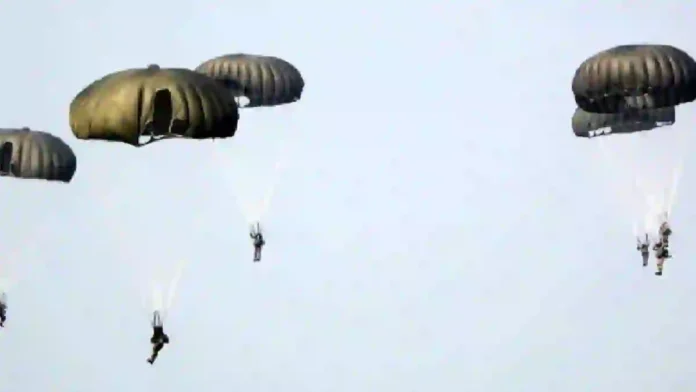Sources – AFI
From January 22nd to 27th, the Indian Army and Indian Air Force joined forces for a large-scale airborne training exercise dubbed “Exercise Devil Strike” near the strategically crucial Chicken’s Neck in North Bengal. This impressive display of military might showcased the seamless integration of forces and assets from both branches, highlighting their ability to operate synergistically in a complex networked battlefield environment.
Exercise Devil Strike was designed to meticulously practice the entire spectrum of operations an airborne force might encounter. Over 1,000 paratroopers from the Eastern Command, along with elite GARUD special forces commandos from the IAF, took part in the exercise. They were supported by an array of aerial assets, including:
Rafale fighter jets: Providing air superiority and close-combat support.
C-130J Super Hercules: Serving as the workhorse for troop and equipment transport.
AN-32 transport aircraft: Offering additional airlift capabilities.
Read- China will influence our neighbours, we should not be scared says S Jaishankar
Indigenous Advanced Light Helicopters (ALHs): Facilitating troop insertion and rapid movement on the ground.
The exercise covered a wide range of critical maneuvers, including:
Aerial induction of troops and heavy weapons: Demonstrating the ability to quickly deploy forces behind enemy lines.
Logistics re-supply: Ensuring sustained operations even in remote locations.
Destruction of high-value targets: Simulating precision strikes against critical enemy infrastructure.
Successful link-up with advancing ground forces: Highlighting the importance of coordinated operations between airborne and ground troops.
Exfiltration operations: Practicing the safe extraction of forces from contested areas.
To further add to the realism of the exercise, Exercise Devil Strike incorporated an intense electronic warfare environment. This simulated the potential challenges of modern battlefields where communication and navigation systems can be disrupted by enemy forces. By operating under these simulated conditions, the participating troops gained valuable experience in adapting their tactics and maintaining command and control in a contested electromagnetic spectrum.
The successful execution of Exercise Devil Strike underscores the growing capabilities of the Indian Army and Indian Air Force. It demonstrates their ability to work seamlessly together, employ cutting-edge technology, and operate effectively in complex battlefield scenarios. This exercise sends a clear message of India’s military preparedness and its commitment to safeguarding its national security interests.




